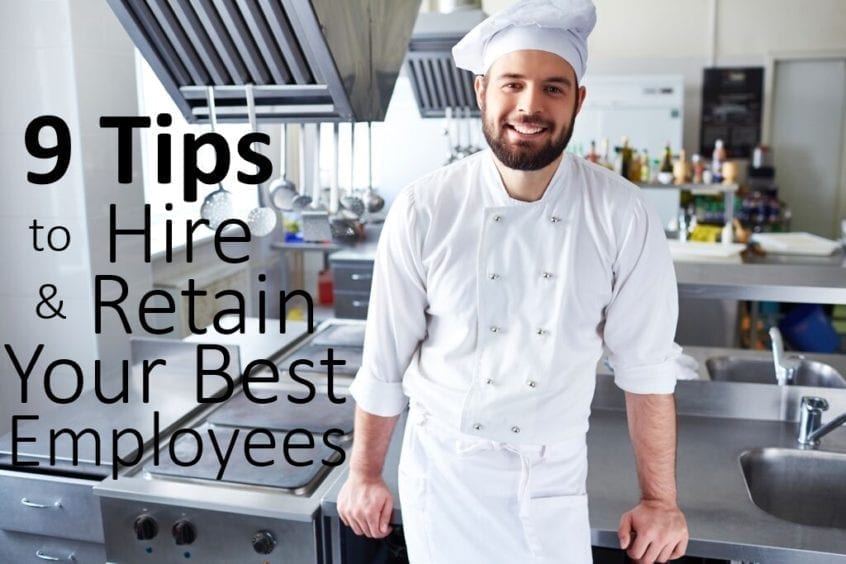It’s a bird…it’s a plane…it’s superman, no…it’s a flying waiter! Sure flying waiters (or drones) are kitschy and eye-catching, but this trend is also in response to difficulties restaurants have in hiring and retaining great employees.
Timbre, a Singapore based restaurant with five outlets plans to deploy drones to carry food to tables. TGIF also used drones at a Brooklyn, NY restaurant; unfortunately, the drone smashed into a photographer. Are robots really the solution to the restaurant industry’s rising manpower crunch? Or does this only indicate the severity of the recruiting and retention problem within foodservice around the globe?
The labor shortage is most evident in the US where almost 43% of job positions in the accommodation & food service industry remain unoccupied for longer than three months —the longest lead time of any industry. The overall turnover rate in the restaurants and accommodations sector was 66.3% percent in 2014, up by 10% from the recent low of 56.6% in 2010.
The magnitude of employee turnover is particularly evident in the fast food industry. A job in a quick service restaurant (QSR) or fast food outlet typically pays close to minimum wage, across the world. Among other jobs, working in a fast food outlet requires more physical work, the ability to stay on one’s feet for several hours, and little by way of learning new skills. Good service does not always get rewarded with a tip. A large proportion of these jobs are mostly often temporary. Vacancies tend to get filled during downturns in the economy, when people see it as a short-term alternative to unemployment. However, when food outlets tend to expand when the economy is on an upswing, people are less likely to apply for these jobs: a double whammy for recruiters!

Tired of dealing with ice machine issues on your own?
Find out how Easy Ice makes them disappear.
While higher wages and incentives can help retain employees, it is debatable if they lead to increased productivity. Moreover, for QSRs like McDonald’s and Burger King, labor expenses at most outlets exceed profits and hence any additional wage hikes may put pressure on outlets to cut costs - always an easier thing to do than getting more people to eat at the outlet.
Although there are no easy answers to finding and retaining employees, particularly in the QSR industry, a few changes may help alleviate the problem. By following these 9 tips, your chances of hiring and retaining great employees will increase:
Hiring and Retention Tip #1: Choose employees who know the industry
First things first; hire people who understand service and like it too. Hire trained professionals for managerial/ supervisor positions because good supervisors are crucial for retention. For part-time jobs, seek students who are studying hospitality management. These students know the realities of the industry. In addition, they will take their employment as a training opportunity in order to build their resume and position themselves better with the goals of obtaining supervisory jobs upon graduating. Many hospitality programs, especially those that are accredited, have work experience requirements for their students. Partnering with local colleges, universities and culinary schools can help you find and attract top performing part-time employees.
Food for thought: Everyone looks to students to fill part-time jobs. How about hiring senior citizens who also have time on their hands and are less likely to switch jobs?
Hiring and Retention Tip #2: Find the right match
Design job descriptions very carefully and update job descriptions frequently. The skill requirements of a specific job should be carefully studied, and workers should be tested for the requisite qualifications.
Hiring and Retention Tip #3: Show your employees a future
Chick-fil-A offers a Leadership Scholarship Program with $1,000 scholarships to qualifying employees to the school of their choice. Not coincidentally, the turnover rate among store operators at Chick-fil-A is less than 5% turnover rate while the fast food industry average is 35% . Most Chick-fil-A operators stay with the company for more than 20 years! These numbers are unprecedented in QSR’s – learn from their example!
Skilled employees tend to leave when better opportunities present themselves. Establishing a career development program could provide leadership opportunities and lead to them acquiring higher-level skills and create a sense of loyalty. Supporting employee education by helping them engage in high school completion program, paid education leaves, and tuition reimbursement are other options. Offering tuition reimbursement benefits while not providing the time to pursue an education does not help!
Hiring and Retention Tip #4: Reevaluate your benefits package
Offer benefits that your employees seek. Lion’s Choice, a roast beef restaurant franchise chain located around the St. Louis area, asked its employees to figure out what works the best for them. Jim Tobias, president of Lion’s Choice, in an interview with QSR magazine, said the major reason for his brand’s whooping retention rates is the benefits offered to employees such as the 401(k) program and life insurance. 8% of Lion’s Choice’s full-time employees have been with the company for 10 years or more, and the brand holds a record of going an entire year without one employee leaving or being fired.
Hiring and Retention Tip #5: Communicate with your employees and recognize their contributions
Give every employee a chance to understand the profitability of the business by taking them through the books. Encourage open communication among the various levels of hierarchy and induce a sense of ownership. Talk to employees about the restaurant’s performance to make them feel responsible. Say ‘Thank-you" often, acknowledge employees’ contribution, and add provisions for rewards.

Need help finding the right ice machine for your business?
Easy Ice has the right machine for you.
Hiring and Retention Tip #6: Develop a two-way feedback system
Feedback is a vital tool to connect with your employees and to make them feel connected. Ask for suggestions and acknowledge good suggestions. Create an evaluation system to regularly assess employees’ as well as the organization’s performance. This system has to be fair and transparent.
Hiring and Retention Tip #7: Set-up an inclusive organizational culture
QSRs tend to share operational similarities; hence, work culture makes all the difference when it comes to employees. Create a work environment that is more than just a brand image and dictated rules. The work culture must make people feel included. Create a work environment that values diversity. Celebrate milestones together. Acknowledge employees’ life outside of work.
Hiring and Retention Tip #8: Small things make a big difference
As a restaurant owner or manager, it is your responsibility to make employees feel valued. As The Wall Street Journal suggests, keep it "Perky". Offer small perks like free food and parking. Offering flexible scheduling such as “mom hours” increases employee morale high.
Hiring and Retention Tip #9: Embrace technology
Many restaurants have discovered their own ways to cope with manpower shortage. Some restaurants are using IPad-based self-ordering to reduce waiting time for customers while they save man hours; hence, a win-win. In-N-Out is a shining example of a quick-service restaurant that used best practices such as flexible hours, benefits and offering a clear path for advancement.
These practices contributed to In-N-Out making its way into the top ten of Glassdoor’s annual Best Places to Work rankings. In-N-Out is touted for excellent care of employees and boasts above-standard pays and expansive set of benefits, including 401(k) plans, paid vacation for part-timers, and health, dental, and vision plans for full-time workers.
Employee retention may be the biggest challenge for quick-service food industry in US but brands like Lion’s Choice, In-N-Out and Chick-fil-A are the paragon indicators that this challenge can be overcome.
About the authors:
Our frequent blog contributor, Professor Swathi Ravichandran, collaborated on this article with one of her graduate students, Shweta Singh.
Swathi Ravichandran is an associate professor and coordinator of the BS in hospitality management and MS in hospitality and tourism management degree programs at Kent State University (KSU) in Kent, OH. She received an MBA in marketing and a PhD in foodservice and lodging management from Iowa State University. In 2014, Ravichandran received the Distinguished Educator of the Year award from the Professional Convention Management Association (PCMA). Following this recognition, she received a commendation from the Ohio Senate naming her one of “Ohio’s finest educators.”
Shweta Singh is a graduate student majoring in hospitality and tourism at Kent State University. She holds a bachelor's degree in mathematics and post graduate diploma in travel management. Singh spent multiple years in marketing and operations in the hospitality industry. Most notably, Singh worked for Indian Railway's luxury tourist train, The Maharaja Express, voted the world's leading luxury train. With robust travel experience, Singh continues her studies and interests in tourism marketing, planning and sustainable tourism.

As the Co-Founder and COO of Easy Ice, John Mahlmeister has been working in the commercial ice machine industry since 2009. Co-headquartered in Phoenix, AZ and Marquette, MI, Easy Ice is the only national provider of full-service ice machine subscriptions in the industry. Since Easy Ice was founded, the number of ice machines under its management has grown to over 30,000 units across 47 states, with no signs of slowing down.

